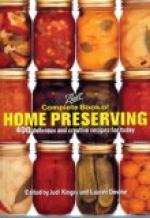Certainly it is advisable, even though our own house be not high-priced, to discover if there is a building restriction to prevent the erection of cheap structures near by. This is regulated usually by a stipulation in the deeds from the original subdivider. Without this guaranty even a high price for lots does not insure that some fellow who has put most of his money into the ground may not put up a woodshed next door and live in it until he can build a house. We shall not find it amiss either, to know something of the character of the owners of the adjoining property, for if they are real-estate men there is a probability of their putting up houses built to sell. Non-resident owner may be expected to allow their vacant lots to remain unkempt and to object to all improvement assessments.
TREES
Trees on the lot are a valuable asset, though dislike for sacrificing them, if carried too far, may result in shutting out the sunlight that is more essential than shade to health. Cottonwood, willows, and even the pretty catalpa are to be shunned in the interest of tidiness. On a 50- or even 100-foot lot we cannot have many trees without overshadowing the house. A few away from the building, not crowded together, will give more satisfaction than a grove and be less a detriment to health. Ordinarily grass will not grow to advantage where there is much shade; and a beautiful lawn, though open to the sunlight, is not only more attractive but much more serviceable than ground in heavy shadow and covered with sparse grass.
INCOME AND EXPENDITURE
Prices of vacant property in different sections vary so greatly that one cannot safely approximate the cost of a building lot. It is safe to say, though, that if values are figured on a proper basis, a satisfactory site for a moderate-priced home can be purchased for $1,000 in the town of our choice.
We have made it clear to ourselves that a home—anyone’s home—should be much more than a house plumped down upon any bit of ground that will hold it. When we come to consider the house itself, we are confronted by the knowledge that here the tastes and habits, as well as the size and resources of the family, must govern the decision of many problems considered. Numbers alone are not always a fair guide, for sometimes the man or the woman of the house, or the baby, counts for much more than one in figuring space requirements.
We have in mind here that we are a family of four, that we have an income of from $1,500 to $2,500, and that we are prepared to spend or obligate ourselves to spend from $2,000 to $3,500 for a house to go on a lot to cost $1,000. The house we think of would be not too large for two and certainly would comfortably accommodate five or even six, depending upon their relations to one another. The extremes of income mentioned would scarcely affect our plans, and the difference in cost is accounted for by the choice of nonessentials and not by differences in the principal features of the house.




